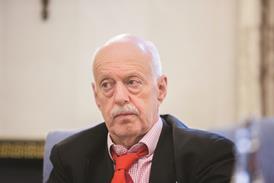The must-read stories and debate in health policy and leadership.
This week Hugh McCaughey, the national director of improvement since April 2019, decided the time is right to leave Skipton House. He is going to retire after a 36-year career in the NHS, which has included senior roles in the NHS in Northern Ireland.
He leaves amid an ongoing restructure within NHS England’s presidium that will see the improvement directorate, NHSX’s digital transformation work, and NHS Digital moved into the “transformation factory” of Timothy Ferris, who joined the executive board last year from a high-profile role in the US.
HSJ readers lamented Mr McCaughey’s departure with a few barbs at the organisation he leaves behind. One said he is “a man of integrity, skill, humour and real-world experience – all things lacking in NHSE when he joined”. Another called him “one of the good guys” who had been “badly treated (again) by the NHSE Politburo”.
News of his retirement comes a few days after HSJ reported Geraint Lewis, the long-standing director of NHSX, would soon be leaving after nine years in post to join Microsoft.
There has also been a third high-level departure from the upper echelons of NHSE, with the long-serving and highly respected Professor Sir Keith Willets deciding the time is right to move on to something new.
Sir Keith has been the NHS’ point man for various conflagrations over the past few years, taking on roles including senior responsible officer for the covid vaccination programme, strategic incident director for the covid pandemic, and strategic lead preparing for EU Exit.
He will move into the chair of South Central Ambulance Service Foundation Trust in April after its current occupant, Lena Samuels, vacates it to become chair of the Hampshire and Isle of Wight integrated care system.
Covid landscape changes
The highly contagious nature of the omicron variant combined with its relevant mildness is altering the nature of hospitals’ covid intake, borne out in stats that show only 41 per cent of covid positive patients in London hospitals are being primarily treated for the disease.
Many more patients now have “incidental” covid, which is secondary to the main reason they are in hospital.
The change is starkest in the capital, where the UK’s omicron wave first took off. On 1 December there were 1,024 covid positive patients in the capital’s hospitals, of which 82 per cent had the disease as their “primary diagnosis”. On 1 January that number had ballooned to 2,914, but the proportion of those with a covid primary diagnosis had fallen to 59 per cent.
On 18 January, the latest data available, the covid inpatient total in the capital was approximately the same at 2,962, but covid was the primary diagnosis of only 41 per cent.
From 1 to 18 January those inpatients with covid as a primary diagnosis fell by 30 per cent, while the total of those with ‘incidental covid’ increased by 48 per cent. Read our full story, with figures for other regions, here.
Also on hsj.co.uk today
Finish the week with Julian Patterson’s take on events in his weekly column, and in news, read about NHS England admitting it will miss its target to clear the backlog of cancer patient long-waiters.

























No comments yet